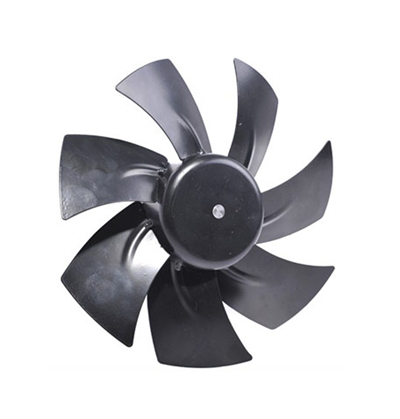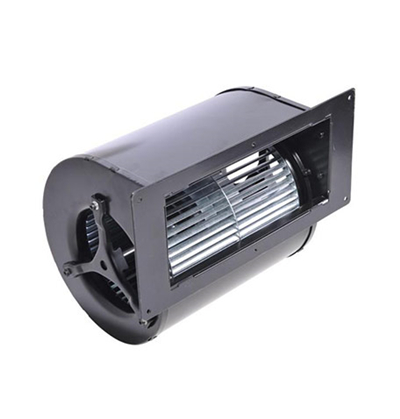Thermal Management in Electronics: DC Axial Fans in Cooling Systems
Introduction to Thermal Management in Electronics
Overview of thermal management in electronics
Thermal management is a crucial aspect of electronic devices as it involves controlling the temperature generated by the various components within them. This is essential to ensure the proper functioning and longevity of electronic devices.
During operation, electronic components such as processors, graphics cards, and power modules generate heat due to the energy dissipation that occurs. If not effectively managed, this heat can lead to device failure, reduced performance, and even safety hazards.
Importance of cooling systems in electronic devices
Cooling systems play a vital role in dissipating the heat generated by electronic devices. They are responsible for maintaining optimal operating temperatures, preventing overheating, and ensuring the overall efficiency and reliability of the device.
Here are some key reasons why cooling systems are essential in electronic devices:
1. Prevention of overheating: Cooling systems, such as fans, heatsinks, and liquid cooling solutions, help dissipate heat and prevent electronic components from reaching critical temperatures. This safeguards the device from damage and extends its lifespan.
2. Improvement of performance: By managing temperatures, cooling systems prevent thermal throttling, which occurs when a device reduces its performance to prevent overheating. Efficient cooling ensures consistent performance and enables devices to operate at their full potential.
3. Reliability and durability: Excessive heat can cause electronic components to degrade over time, leading to premature failure. Cooling systems help maintain stable temperatures, enhancing the longevity of the device and reducing the likelihood of component failures.
4. Safety: Overheating can pose safety risks, such as fire hazards or electrical failures. Adequate cooling systems mitigate these risks by regulating temperatures and preventing excessive heat buildup.
In conclusion, thermal management and cooling systems are integral to the proper functioning and longevity of electronic devices. Effective heat dissipation not only ensures device reliability and performance but also safeguards against potential safety hazards.
Basics of DC Axial Fans
Explanation of DC axial fans and their operation
A DC axial fan is a type of cooling fan that is commonly used in electronic devices to dissipate heat. It consists of a rotating blade or impeller that draws air in and pushes it out in a direction parallel to the fan's axis. The fan is powered by a DC motor, which provides the necessary rotational force.
DC axial fans operate on the principle of air movement through rotation. As the blade spins, it creates a pressure difference, causing air to be drawn in from the fan's intake side and expelled from the outlet side. This air movement helps to remove the heat generated by electronic components.
Different types of DC axial fans and their applications
There are various types of DC axial fans available, each designed for specific applications:
| Type of DC Axial Fan | Applications |
|---|---|
| Standard DC Axial Fan | Computer cooling, electronics cooling |
| High airflow DC Axial Fan | Data centers, server racks |
| Silent DC Axial Fan | Home theater systems, audio equipment |
| Waterproof DC Axial Fan | Outdoor electronics, marine applications |
| Dustproof DC Axial Fan | Industrial machinery, dusty environments |
Each type of DC axial fan has specific features and characteristics that make it suitable for different environments and cooling requirements.
In summary, DC axial fans are integral to the thermal management of electronic devices. They provide efficient cooling by circulating air and dissipating heat, ensuring optimal performance and reliability. The different types of DC axial fans cater to various applications and environments, allowing for effective heat dissipation in specialized settings.

Factors to Consider when Selecting DC Axial Fans
Key considerations in selecting DC axial fans for cooling systems
DC axial fans are an essential component in cooling systems for electronic devices. When selecting the right fan for your specific application, there are several factors to consider:
• Airflow requirements: Determine the amount of airflow needed to effectively dissipate heat from the electronic components. This will depend on the power consumption and heat dissipation capabilities of the devices.
• Fan size and mounting: Consider the available space and mounting options in your application. DC axial fans come in various sizes, and it is crucial to choose a fan that fits adequately and can be securely mounted.
• Noise level: Take into account the noise tolerance of the environment in which the fan will be operating. Some applications, such as home theater systems or audio equipment, require silent operation, while others may tolerate higher noise levels.
• Environmental conditions: Consider the environmental conditions in which the fan will operate. For outdoor electronics or marine applications, a waterproof fan is essential to protect against moisture. In dusty environments, a dustproof fan will help prevent the accumulation of debris.
Understanding airflow requirements and static pressure
When selecting a DC axial fan, it is crucial to understand the concept of airflow requirements and static pressure:
• Airflow requirements: This refers to the volume of air that needs to be moved by the fan within a specific time period. It is measured in cubic feet per minute (CFM) or liters per second (L/s). Carefully calculate the airflow requirements based on the cooling needs of your electronic devices.
• Static pressure: Static pressure is the resistance that the fan encounters as it moves air through a system. It is crucial to choose a fan with sufficient static pressure to overcome any resistance caused by filters, ducts, or heat sinks in the system.
By carefully considering these factors and understanding airflow requirements and static pressure, you can select the right DC axial fan for your cooling system. This will ensure optimal cooling performance and reliability for your electronic devices.
Design and Placement of DC Axial Fans in Cooling Systems
Optimal design strategies for incorporating DC axial fans in cooling systems
DC axial fans play a critical role in cooling systems for electronic devices. Incorporating them into the design of the system requires careful consideration to ensure optimal performance. Here are some design strategies to keep in mind:
• Airflow optimization: To maximize cooling efficiency, it is important to design the system in a way that facilitates proper airflow. This includes ensuring sufficient space around the fan for air to flow freely and avoiding any obstructions that could restrict airflow.
• Fan placement: The placement of the DC axial fans within the system is crucial. Fans should be positioned strategically to distribute airflow evenly and reach all components that require cooling. Consider the heat sources and identify areas that need extra cooling attention.
• Fan orientation: The orientation of the fan blades can impact performance. In general, positioning the fan to blow air towards the heat source is recommended. This helps to remove hot air from the components effectively.
• Ventilation: Along with fans, incorporating proper ventilation measures can enhance cooling efficiency. This may include vents or perforations in the system enclosure to allow the escape of hot air and intake of cool air.
Importance of proper placement for effective heat dissipation
The placement of DC axial fans is instrumental in ensuring effective heat dissipation. Here are some reasons why proper placement matters:
• Heat concentration: Electronic devices often have specific components that generate more heat than others. Placing fans strategically near these components helps to dissipate the heat efficiently, preventing overheating.
• Heat distribution: Placing fans in a way that ensures even distribution of airflow helps to minimize the occurrence of hot spots. This helps to maintain a consistent temperature across the electronic system, improving overall performance and reliability.
• Elimination of stagnant air: Proper placement of fans can help eliminate stagnant air pockets within the system, ensuring that all areas receive adequate cooling.
• Reduced noise and vibration: Poor placement of fans can lead to increased noise and vibration. Placing fans in positions that minimize obstructions and optimize airflow can help reduce noise levels and prevent excessive vibration.
By considering these design strategies and ensuring proper placement of DC axial fans, cooling systems can effectively dissipate heat and maintain optimal performance for electronic devices.

Performance Characteristics of DC Axial Fans
Understanding fan performance curves and specifications
DC axial fans have specific performance characteristics that determine their effectiveness in cooling systems. Two important aspects to consider are the fan performance curves and specifications:
• Fan performance curves: These curves graphically represent the relationship between the fan's airflow rate and static pressure. The curves provide valuable information about the fan's operating range and performance at different airflow rates and static pressures. By analyzing these curves, designers can select fans that match the cooling requirements of their system.
• Specifications: DC axial fans come with specifications that indicate their airflow rate, static pressure, noise level, and power consumption. These specifications help designers determine if a fan is suitable for their cooling system. It is essential to carefully review and compare the specifications of different fans to ensure optimal performance and compatibility.
Key factors affecting fan performance and efficiency
Several factors play a crucial role in determining the performance and efficiency of DC axial fans:
• Fan size: The size of the fan affects its airflow capacity and static pressure. Larger fans typically have higher airflow rates and can generate more pressure, making them suitable for applications that require high cooling performance.
• Motor efficiency: The motor efficiency of a fan influences its power consumption and overall energy efficiency. High-efficiency motors can reduce energy consumption and contribute to cost savings.
• Blade design: The design of the fan blades can significantly impact airflow and noise levels. Fans with well-designed blades can achieve higher airflow rates while producing minimal noise.
• Airflow restriction: Any obstruction or restriction to the airflow path can decrease the fan's performance. It is important to design the system with sufficient space and airflow pathways to ensure efficient cooling.
• Fan speed control: The ability to control the speed of the fan can optimize cooling performance and energy efficiency. Variable speed control allows the fan to adapt to changing heat loads, reducing noise and power consumption when cooling demands are lower.
By considering these performance characteristics and factors affecting fan performance, designers can select and optimize the use of DC axial fans in cooling systems for optimal cooling efficiency and reliable operation.


